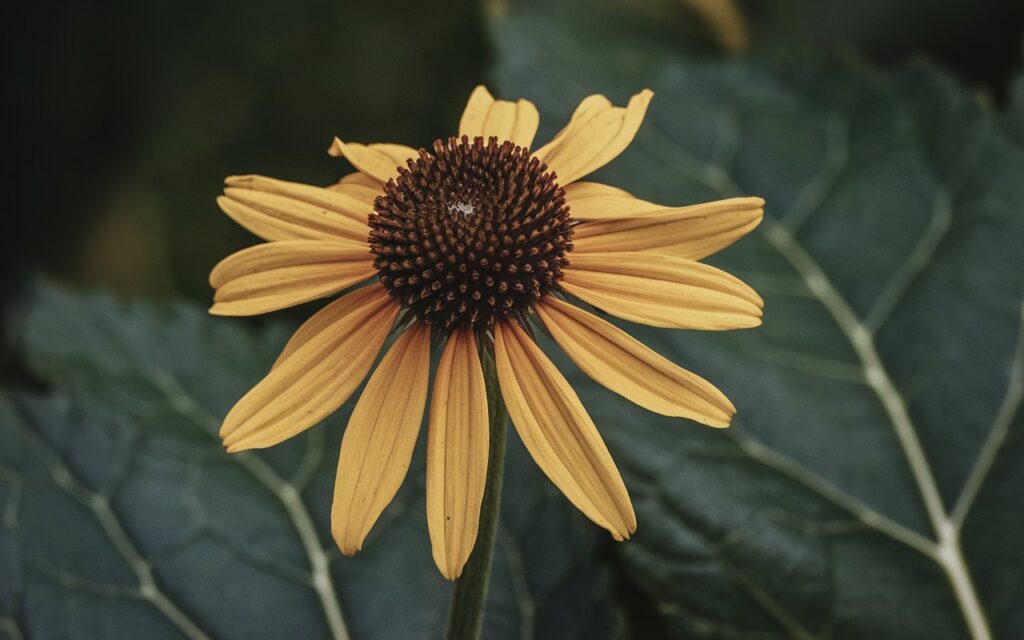Black-Eyed Susan, scientifically known as Rudbeckia hirta, belongs to the Aster/Sunflower family and is native to eastern and central North America. This striking plant, also known by various names like brown-eyed Susan and gloriosa daisy, is not only a beautiful garden addition but also a traditional herbal remedy.
Identification and Habitat
Black-Eyed Susan typically grows as an annual, though it can sometimes be a perennial. The plant reaches heights of up to 3 feet and spans about 1 ½ feet in width. Its leaves, which alternate along the stem, are 4 to 7 inches long and covered with coarse hair. The branched stems emerge from a single taproot, and the plant reproduces solely by seed. Its bright yellow petals encircle a brownish-black dome at the center, creating a flower that is approximately 4 inches in diameter. This flower is a common sight in late summer and early autumn, thriving in full sun and moist to moderately dry soil.
Medicinal Uses of Black-Eyed Susan
Black-Eyed Susan has a long history of medicinal use, particularly among Native American tribes. The roots and, occasionally, the leaves of this plant offer a range of health benefits.
Colds, Flu, and Infections
A root infusion is traditionally used to combat colds, flu, and infections. To treat these conditions, drink the infusion daily until symptoms subside.
Parasites
The Chippewa people have used Black-Eyed Susan root tea to treat worms in children. This traditional remedy is a natural way to address parasitic infections.
Snake Bites and Skin Irritations
- Snake Bites: Black-Eyed Susan poultices are said to be effective for treating snake bites. To use, moisten chopped leaves or ground root, apply to the affected area, and wrap with a cloth until the swelling reduces.
- Skin Irritations: A warm root infusion can soothe irritated skin, including sores, cuts, scrapes, and swelling. Simply wash the affected area with the infusion for relief.
Earaches
For those with fresh roots, the sap or juice can be used as drops to treat earaches. One or two drops in the affected ear, applied morning and night, will help clear the infection and relieve pain.
Immune System Stimulation
Similar to Echinacea, Black-Eyed Susan roots stimulate the immune system, making them useful for treating colds, flu, and other minor illnesses. However, individuals with autoimmune conditions should exercise caution when using this herb internally due to its immune-stimulating properties. For more immune-boosting herbs, check out our Herbal Immune Support Guide.
Tuberculosis
Black-Eyed Susan contains compounds that act against the bacterium responsible for tuberculosis, making it a potential natural remedy for this serious illness.
Harvesting Black-Eyed Susan
To harvest the taproot, wait until the plant has produced seeds, then dig the plant up by the root. Black-Eyed Susan has a central taproot with hairs but no other rhizomes. Dig deeply to retrieve the entire root. You can use the root fresh in season and dry some for future use. For more harvesting tips, visit our Herb Harvesting Guide.
Safety and Warnings
While Black-Eyed Susan has many medicinal benefits, it comes with some cautions:
- Toxicity: The plant is toxic to cats and is reported to be poisonous to cattle, sheep, and pigs. Additionally, the seeds are poisonous.
- Autoimmune Conditions: Those with autoimmune conditions should be careful when using this herb internally due to its immune-stimulating properties.
Conclusion
Black-Eyed Susan is a versatile herb with a wide range of medicinal uses, from treating colds and flu to addressing skin irritations and even tuberculosis. However, it’s essential to use this herb with caution, especially if you have pets or an autoimmune condition. For more on the benefits and precautions of herbal remedies, explore our other articles on Lost Herbal.
